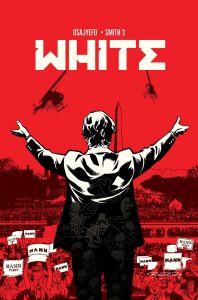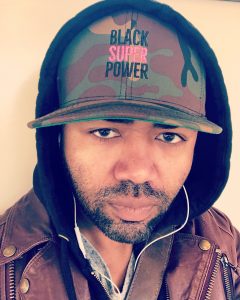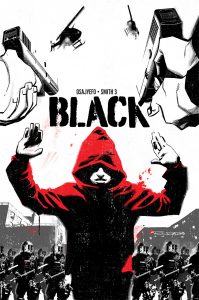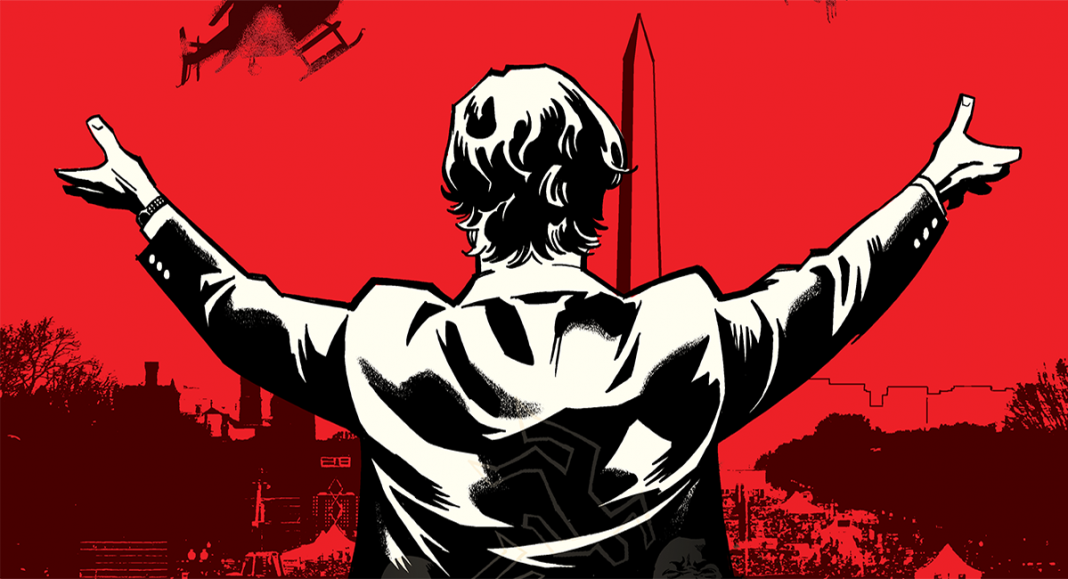
Published by Black Mask Studios after a successful Kickstarter, the series created by Kwanza Osajyefo and Tim Smith 3 had its second part of the planned trilogy recently funded by Kickstarter—White. Osajyefo chatted with The Beat about the next chapter in the Black universe.
Deanna Destito: Both Black and now White are incredibly timely, touching on a systemic race issue this country continues to battle. Obviously, this was planned and created before the most recent election, but there is no question how fitting it is. How do you create a work like this without getting overly political, but still make the message clear?
Kwanza Osajyefo: Neither Black nor White are timely; these comics follow the arc of history. We’ve seen stories like this play out repeatedly in real life since the US instituted race constructs to rationalize the chattel slavery of Black people. Few comics are apolitical (masked vigilantism), so creating a work that isn’t would be quite a feat. I think what is clear is that stories reflecting Black experiences face politicization due to institutional racism. That stated, the antagonist in White has become President of the United States, so actual politics do play out in the story.
Destito: Mann can definitely be compared to a list of superhero book villains, but he’s scarily similar to 45, particularly exploiting others for his own gain. What is it like to write a character like this, especially when aspects seem too real?
Osajyefo: Theodore Mann was inspired more by the “celebrity CEO” that has become a fixture in our infotainment than Trump specifically – he’s an absurdly enabled incompetent. My approach to Mann was an amoral older Tony Stark or younger Logan Roy (Succession). Capable, cunning, and precise in his vision for the future. Because of the real-world context around Black, some misinterpret his character as a taboo racist. While he makes callous remarks, Theodore’s ambitions are driven by a lust for power above all else; previously supernatural but now political, giving him more access to the former. He’s a willing product of legacy wealth, as is his son, Thaddeus. So in White, we see how people who’ve always had privilege and power react to a perceived threat to the status quo.

Destito: Has this installment been influenced by other books in the Black universe (Devil’s Dye, etc.)?
Osajyefo: White takes place after Widows and Orphans, Devil’s Dye, etc. There are some nods to that as Eli Franklin from America’s Sweetheart appears under her new superhero identity, AMERICANA. After Black, the world is aware that only Black people have superpowers, so in White, the United States reacts to something disruptive. The country is on edge as it has always struggled with its hypocrisy. America is a nation built on the principles that all are created equal and have inalienable rights to life, liberty, and happiness, yet institutionalizing bigotry and inequality.
Destito: Was it important to get the original creative team back on this? Why?

Destito: Do you have plans for what is next in this world?
Osajyefo: I’m taking a break between books to focus on some other ideas. How this story ends is already written, but I want to step away for a bit to think about how we get there.
Destito: Why is a work such as this important for all races, cultures, backgrounds to read?
Osajyefo: There’s still a shortage of stories like this in comics, so I like to think it brings something new to readers that they haven’t seen articulated this way before. The stories of humankind have common threads, so Black and White can appeal to anyone who loves sci-fi, coming-of-age, outsider tales. Seeing them played out from other cultural or ethnic perspectives doesn’t change the axioms of fiction.
Destito: What is your favorite part of creating a universe? Characters? The “science” of it?
Osajyefo: I get the most enjoyment out of character building; their visual design and psychology. It’s somewhere between dressing dolls and genetic sequencing. It’s a different aspect of writing a story that gives you the laws of physics to bash up against or breakthrough. Also, crafting character aesthetic is something I really love. How they look tells just as much of the story as what they face, how they overcome it, etc.
Destito: If you were able to cast your main characters for a movie today, who would you pick?
Osajyefo: That’s really tough. I tweeted some thoughts on that a while back. Caleb McLaughlin would have made a great Kareem Jenkins. Delroy Lindo would be an imposing version of Juncture. And Theodore Mann, I’d like to see Robert Downey Jr. play that character as someone charming who you know is evil.
Destito: How much input did Jamal have in designing the characters, the settings? Do you approach each page collaboratively or do you have a clear picture from the beginning?
Osajyefo: Not much. Tim Smith 3 and I design all of the characters together. I send him inspiration and put together mood boards for him to spark ideas of how the characters look and dress.
Destito: Can you tease any new projects or is everything currently top secret?
Osajyefo: Sorry, no. All I can say is I’m working on a number of things in parallel, and I can’t say for sure which will be ready to debut first.
Head to Black Mask’s website for more on White.







